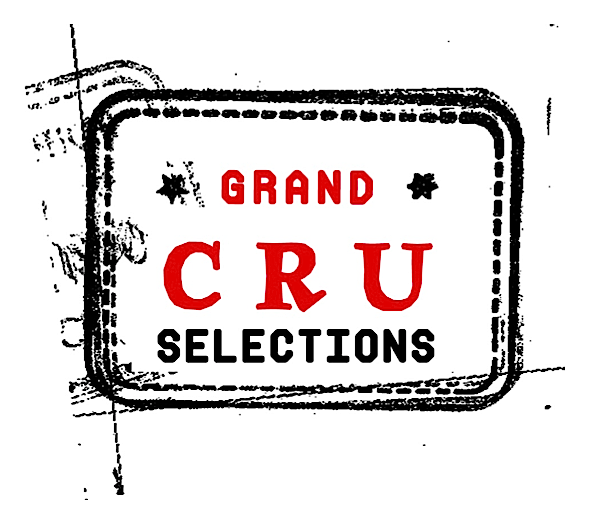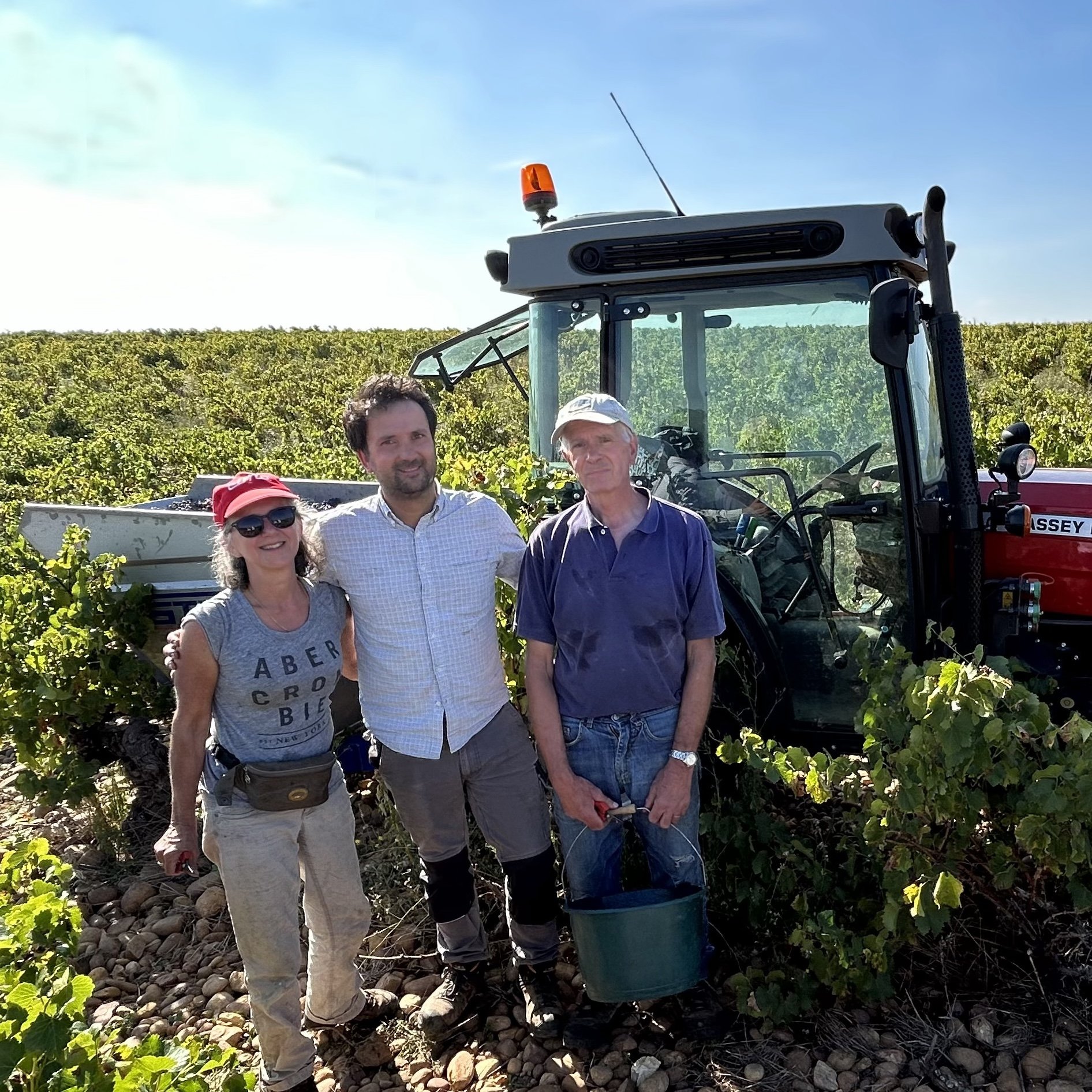Domaine Brun-avril
Châteauneuf-du-Pape, Southern Rhône, France
The Avril family has been in Châteauneuf since the fourteenth century (15 generations and counting). Domaine Brun-Avril, however, was established in 2008 by husband & wife team, Nathalie and Jean-Jacques Brun. Their 5 hectares were part of an inheritance, one that changed the course of their lives. After deciding that they wanted to preserve the family's holdings, they studied viticulture. Since then they’ve expanded their holdings considerably and in 2020, their son Henri joined the domaine.
Despite being new winemakers, their style is decidedly old school. They only produce one red and more recently, one white per vintage and do everything and nothing to let the wine speak for itself.
-
Founded in 2008 by Jean-Jacques and Nathalie Brun with 5 hectares that were part of their inheritance, the family has continued to grow their estate.
In 2020, their son Henri officially joined the domaine and they began to takeover additional family plots located in the four corners of the Châteauneuf-du-Pape appellation, mainly in the following localities - Pied de Baud with very beautiful plots of old Grenaches (near Farguerol), Bourguignons (plot planted with 4 white grape varieties), and Font du Pape.
-
The vines are located in the northern part of Châteauneuf-du-Pape village in an area called Farguerol. There are two distinct but close plots.
1. Grenache: Clay-sand hill, facing south, and covered with large pebbles. The plot is 3 hectares and one hundred years old. Co-planted in the plot is also some Mourvèdre, a practice meant to promote diversity in the final blend. Approximately 10% of this plot is Mourvèdre. The Mourvèdre was planted in the place of a Grenache vine after it died and was ripped out.
2. Syrah: Clayed-sand and silt hillside with an east exposition. The plot is 2 hectares and around 20 -25 years old.
-
The family has been farming organically for years but without being officially certified. They started the official organic conversion process in 2021, which takes 3 years, therefore, the first certified harvest and vintage will be 2024.
-
Like many of the more traditional estates in Chateauneuf, the Brun’s have focused on producing one white and one red cuvée per vintage, as complexity is considered to be the result of the blending of terroirs and varietals. Each grape variety is vinified separately.
Châteauneuf-du-Pape Rouge
Grapes are mostly destemmed - stems are kept only if sufficiently ripe. Light crushing before transfer in tronconic oak vats and barrel-shaped vats. Grenache and syrah are kept separate during vinification. Temperature is maintained below 30°C / 86°F to allow for a slow fermentation. Releases and pumpings-over during the alcoholic fermentation as necessary to gently extract the flavors. After the alcoholic fermentation, long maceration (4 weeks) followed by malolactic fermentation.
The grenache is aged in demi-muids (600 liters) and the syrah in truncated oak vats for 18 months. New oak is around 15%.
Finally, blending with a light filtration before bottling during spring of the second year following the harvest.
Châteauneuf-du-Pape Blanc
Direct pressing with a light settling of the juice. As for the red, stems are kept only if sufficiently ripe. Fermentation in concrete tanks (called “Tulips” because of their shape). All four varietals (grenache blanc, clairette, rousanne and bourboulenc) are co-fermented. For the first two white vintages (2020 & 2021) only used concrete. From vintage 2022, they added a 300-liter oak vat for fermentation.
In 2023, Henri launched a micro-négoce to expand the range of wines offered by the family winery. The first cuvées bottled are a red and a white AOC Côtes-du-Rhône.
Wines
Chateauneuf Du Pape Rouge
Grenache, Syrah and Mouvedre blend dominated by grenache (usually around 80%) with syrah (usually under 10%) and mourvèdre (usually around 10-15%). The red Châteauneuf-du-Pape is a blend from plots in lieu-dit “Farguerol” grapes from plot in the neighboring “Pied de Baud” lieu-dit. 28 day Maceration.The Syrah is aged in big wooden barrels (about 300l) and the Grenache and Mourvèdre in tronconic wooden barrels (600l) for 18 months.
Chateauneuf Du Pape Blanc
50% Clairette, 17% Grenache Blanc, 17% Roussanne, 16% Bourboulenc Vines planted in 1989 on a single plot, just outside the west side of the village, of 1.85 hectares (4.5 acres) in lieu-dit “Les Bourguignons” - an odd yet centuries-old name for a vineyard located in the heart of the southern Côtes-du-Rhône region. This is explained by the notably cooler micro-climate in this area with a clayey-calcareous soil with limestones which is very well suited to produce white wines with acidity and great minerality. Vinification: Direct pressing with light settling of juice. Fermentation in concrete tanks (called ‘Tulips’ because of their shape).
Côtes-du-Rhône Rouge
Blend: 60% Grenache, 40% Syrah The vineyards are located between Orange and Jonquières, north east of Châteauneuf-du-Pape. Clayey-calcareous soil. Vines are 35 years old on average for the grenache and 50 years ols for the syrah. Mistral wind exposure which ensures healthy and concentrated grapes. Viticulture: Organic certification under way. Harvest by hand. Vinification: Concrete and steel tanks for 6 weeks. Indigenous yeasts. Temperature kept low during fermentation. Punch-downs and pumpings-over to gently extract aromas and tannins. Maturing for 12 months in 600 liters demi-muids.
Côtes-du-Rhône Blanc
Blend of 30% grenache blanc, 25% roussanne, 25% marsanne, 20% clairette The vineyard is located between Orange and Jonquières, north east of Châteauneuf-du-Pape. Clayey-calcareous soil with limestone on the surface, bringing minerality to the wine, vines on average, 30 years old. Viticulture: Organic certification under way. Harvest by hand. Vinification: fermentation during 5 weeks at low temperatures in barrels, amphorae, and steel tank. Indigenous yeasts. Maturing in amphorae and demi-muids.

